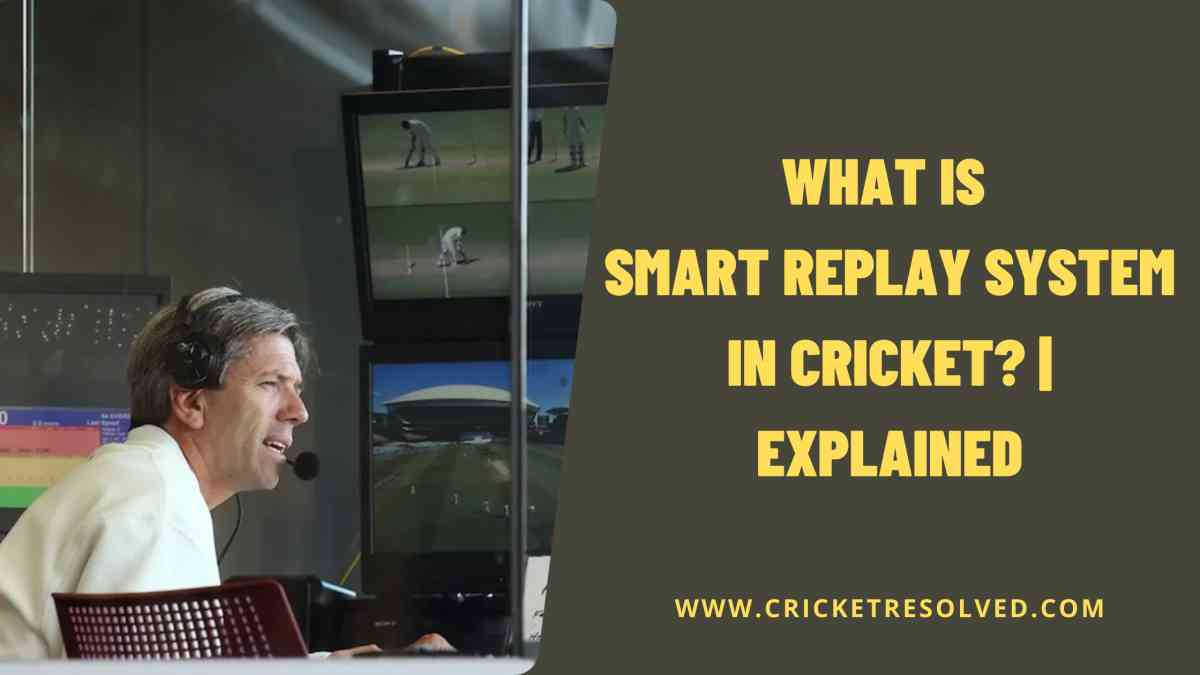
Technology is getting better with each passing day. And it is also making a great impact in cricket by making everyone’s life easier.
We also keep hearing about new technologies making inroads in cricket every now and then.
Umpires have been at the centre of using different kinds of tech devices, be it on the field or in their cabins reviewing on-field decisions. These devices have helped them arrive at the correct decisions without taking too much time.
Despite that, all stakeholders are trying to further speed up the process, and that’s when the Smart Replay System comes into the picture.
So what’s the Smart Replay System all about? How does it function? And how does it benefit the sport?
This piece will answer all your doubts about the Smart Replay System used in cricket.
Smart Replay System in Cricket
The new Smart Replay System is part of the Decision Review System (DRS) used by the third umpire or TV umpire. Under this system, the third umpire will sit along with 2 Hawk-Eye operators in the same cabin and review the footage and images directly shared by them.
Hawk-Eye’s hi-speed cameras placed around the ground will capture the footage. The Hawk-Eye operators will have access to the footage, which they will share with the third umpire to make correct decisions.
In the past, the third umpire could review the footage with the TV broadcast director acting as the middleman between the umpire and the hawk-eye operator.
Also Read | How Does Hawk-Eye Technology Work in Cricket?
But why is the system necessary?
You see, the Smart Replay System eliminates the need for having a middleman while making decisions. Plus, it will save some time as the TV umpire can directly ask the Hawk-Eye operators to provide the footage instead of asking the broadcast director, who in turn will ask the operators to share the same.
Moreover, the TV umpires will now have access to more visuals to refer to, including split-screen images, while arriving at an accurate decision.
In the past, the umpires had limited access to images, resulting in some controversial and inaccurate decisions.
So, the Smart Replay System will now eliminate any chances of inaccurate decision-making and speed up the process by providing synchronised footage.
Also, it will help save some time, which is crucial in shorter formats as games are becoming more fast-paced.
How does the Smart Replay System work?
Until the introduction of the Smart Replay System, the Hawk-Eye cameras had limited usage. They were used for ball tracking and checking edges between the bat and ball.
Now they will have broader usage, with the footage captured by them used for every on-field referral.
So under the Smart Replay System, the third umpire can ask the Hawk-Eye operators to provide visuals for stumpings, LBWs, catches, run-outs, and overthrows.
Let’s understand how the system will work for a stumping review.
If the on-field umpires send a referral request for a stumping, the third umpire will ask the Hawk-Eye operator to share the relevant footage.
The umpire can see a split-screen image, which will show them footage from front-on as well as side-on cameras. They will check if there is a gap between bat and ball.
If there is a clear gap, then they won’t ask for UltraEdge and proceed ahead to check the stumping using the side-on visuals. But if there isn’t a clear gap, then the TV umpire will ask for UltraEdge and make the decision accordingly.
The Smart Replay System is superior to the old system as the third umpire has access to both front-on and side-on visuals.
Previously, the umpires could see side-on visuals along with stump cam footage. But now the additional front-on footage helps them accurately see the bails dislodged while looking at the synchronised side-on visuals.
The system further helps in making conclusive decisions for catches taken close to the ground. Now the umpires can refer to visuals from front-on and side-on cameras and check whether the catch is taken cleanly or not.
Read Next | The Duties of Umpires in Cricket: A Comprehensive Guide

Leave a Reply